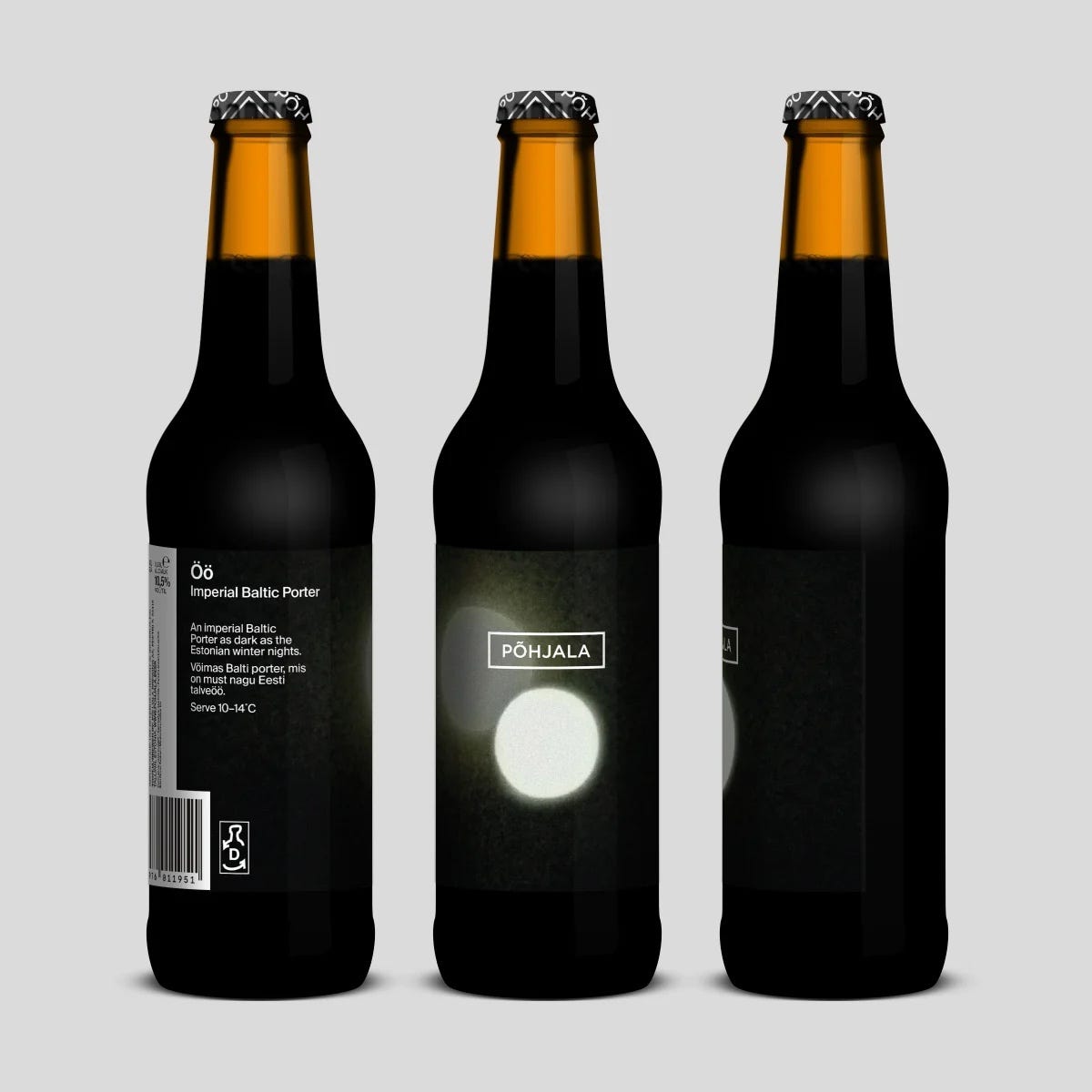The New Head Brewer At Põhjala Explains Why Estonia Is Europe’s Master Of Brewing The Dark Arts
Despite having a population of just 1m people, Estonia has earned a reputation over the last decade or so for creating world-beating Baltic Porters, Stouts, and Imperial Stouts...
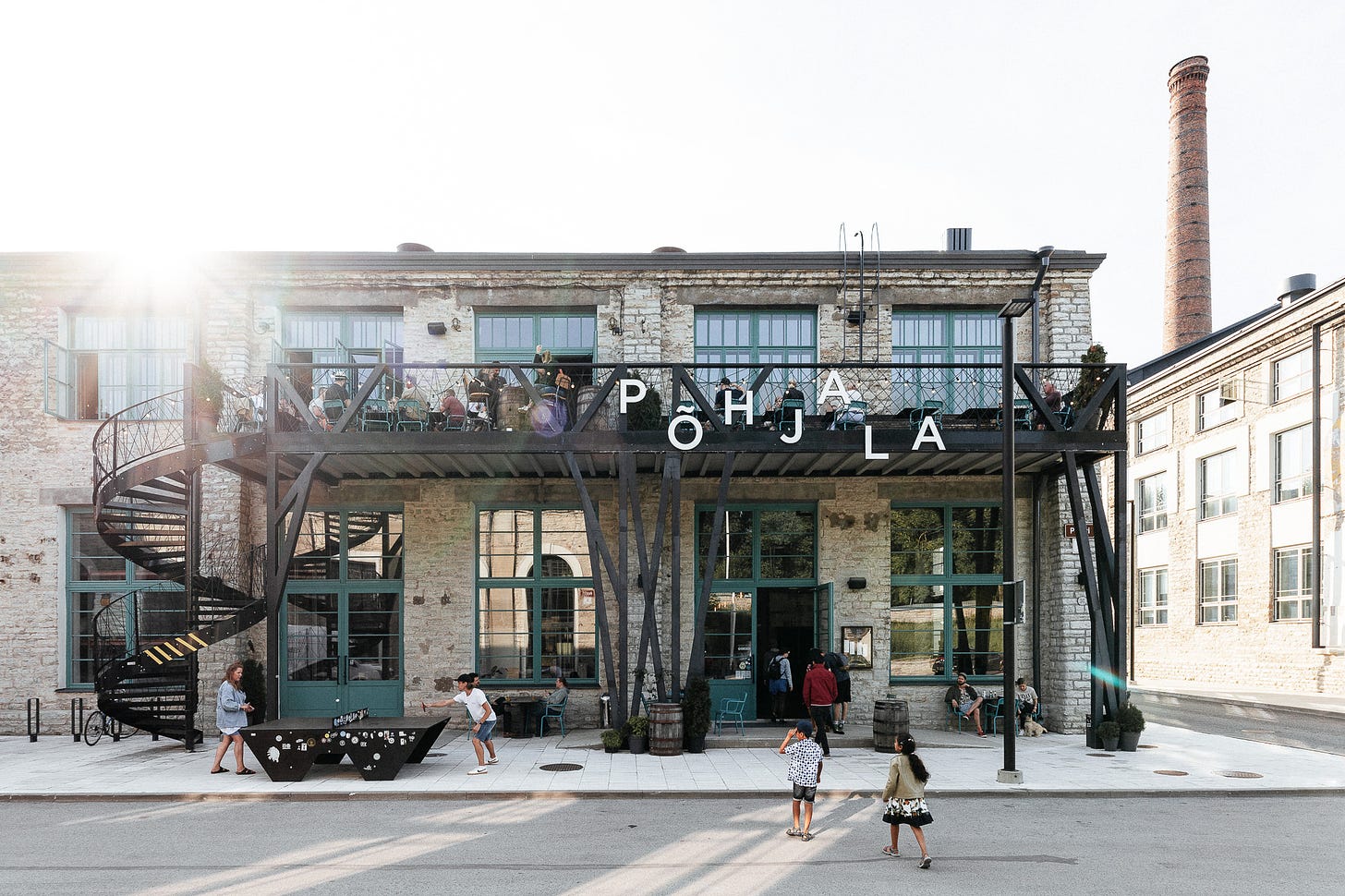
Interviewing Martin Vahtra, the newly-appointed Head Brewer at Põhjala, was daunting. Very daunting.
Despite any previous concerns about coming across as too much of a fanboy (after all, my love for Põhjala beer is more than well-documented!) Martin happily set aside a good 30 minutes for a chat, despite participating in a Põhjala tap takeover at the Cloudwater taproom located on one of Manchester’s better industrial estates.
“The climate and nature in Estonia is very much key to what we do”
To begin the Põhjala story, we need to go back a decade to February 7, 2013, a date upon which Põhjala firmly put Estonia on the map as a master of The Dark Arts; The Dark Arts being Imperial Stout, Stout, Baltic Porter, and Barley Wine.
This turning point in modern Eastern European craft beer was a result of this then-small brewery releasing its first beer, Öö - a 10% Imperial Baltic Porter, and a beer that immediately went on to capture the hearts and livers of hobbyists across the world.
Since then, Põhjala has almost single-handedly cemented Estonia’s status as a dark beer powerhouse; a reputation forged over the last decade on the back of what it does best in terms of quality, complexity, and in several cases, barrel-ageing.
A decade on, and the Tallinn-based brewery still consistently captures the essence of a winter Baltic night when the air is dense and impenetrably inky black. Sub-zero temperatures drop significantly below freezing and would cause the United Kingdom grind to a halt.
Without wishing to sound pretentious - okay, I am being pretentious! - visit Lithuania, Latvia, or Estonia in the middle of January, and you’ll see what I’m getting at.
Surely, then, it makes sense to begin by asking Martin - who has just breezed into the taproom from Manchester Airport - how and why Põhjala has managed to capture the Estonian national character in a 330ml glass bottle.
Part of the reason is because these strong, dark beers have been hardwired into the national DNA since the latter part of the 18th century, when Estonia was one third of the Baltic governorate of the Russian Empire.
“During winter, we only have around four hours of sunlight per-day in Estonia, so it makes sense to pair the complete and utter darkness with a fantastic dark beer”
Tsarina Catherine The Great was particularly partial to imported Imperial Stouts and Baltic Porters from the United Kingdom. Local breweries in then-Imperial Russia, now-Estonia increased their output to keep up with Catherine’s thirst for strong, dark beers.
Several scholars maintain that the Empress also enjoyed the close company of horses, so expect horse breeders to have done the same in order to keep up with her appetite for equine companions.
Back to the beer, though. The other part of Martin’s reasoning behind the long-standing popularity of Baltic Stout and Imperial Porter in Estonia is much simpler. It is, and always has been, a matter of climate.
“During winter, we only have around four hours of sunlight per-day in Estonia, so it makes sense to pair the complete and utter darkness with a fantastic dark beer,” he says matter of factly. “You just want something that is comforting and warming.”
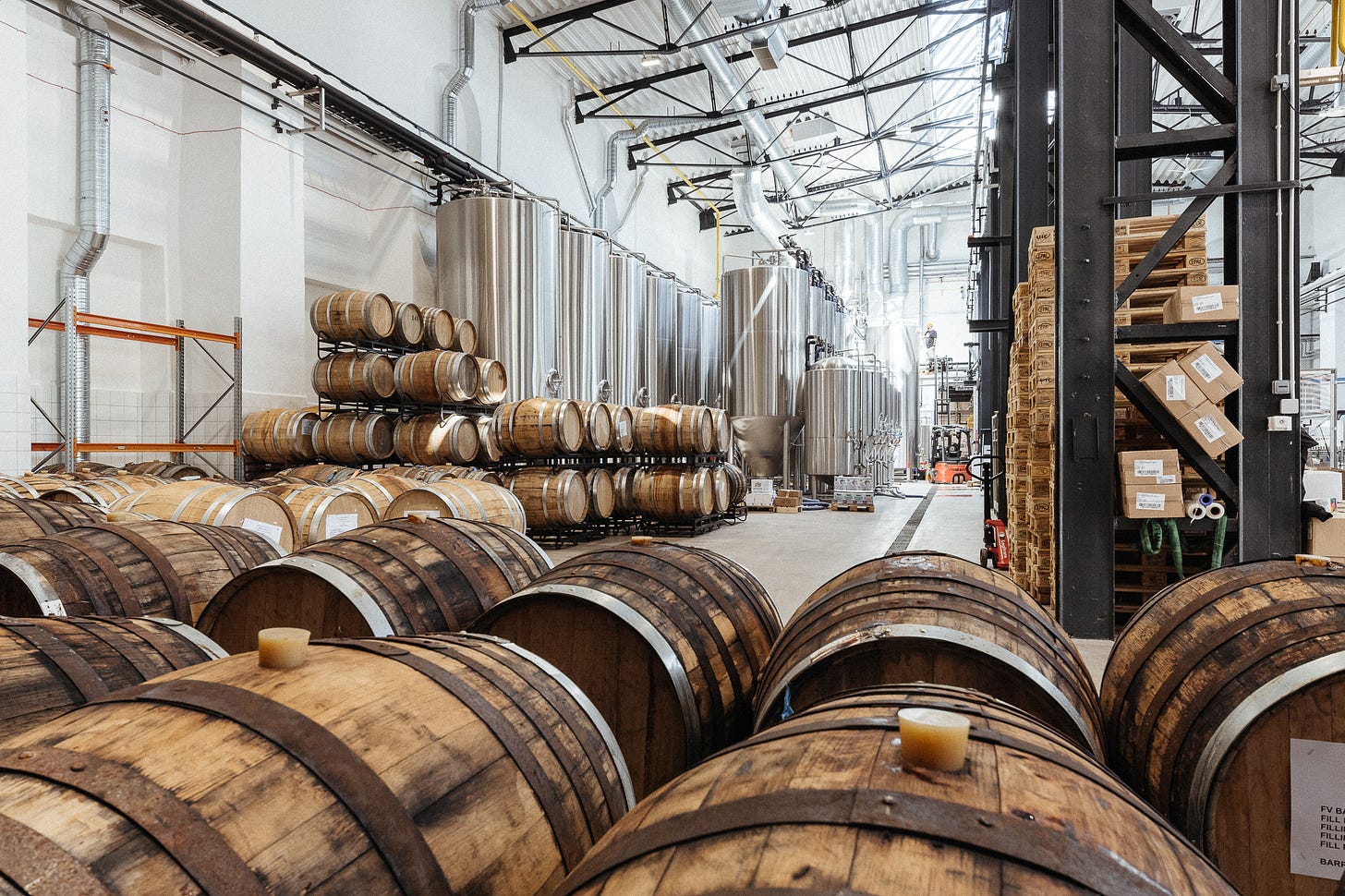
Browsing the Põhjala back catalogue online, some of the locally-sourced ingredients used in some of their dark and BA beers are shrouded in what is essentially a dense Baltic fog of mystery.
To provide some context to the brewery’s emphasis on regionality, here are just some of the dark beers that Põhjala has crafted in recent years: Forest Bänger, a 12.5% Imperial Stout, was brewed with smashed rowan berries and Estonian juniper wood to lend the beer to undercurrents of red berries and rich pipe tobacco.
Porcini, a 9% salted Baltic Porter, got its name from the brewery’s use of smoked porcini mushrooms during the brewing process to provide it with a unique, saline, quality.
Meanwhile, Bison In The Barrel Room, is a jet black, candy-esque 13.5% beast of a Baltic Porter, aged in apple brandy barrels to create what is essentially an incredibly boozy toffee apple. It’s a drink I thoroughly enjoyed spending a good hour or so with on Christmas day. Depending on whether there’s another upcoming cold snap, there’s another bottle of it I’m eying from The Cupboard Of Delights.
“Estonia has a long-standing tradition of blossom and herbal teas that people use as remedies for everything from a cold to a hangover!”
Martin feels that it’s this sense of keeping things local - both in terms of produce and brewing - is what has helped make Põhjala the revered brewery it is today, and one of the reasons why it exports to drinkers in over 40 markets across the globe.
“The climate and nature in Estonia is very much key to what we do,” he explains. “During winter - and it’s a deep, deep winter - temperatures can drop to as low as -28C.
“This is one of the reasons why Baltic Porter has been so popular in Estonia since forever. This style’s fermentation temperatures are very low, which in general makes it very clean and easy to drink. By adding some local ingredients, they can really disguise quite how devious a drink can be!”
Throughout the conversation, it’s clear that Martin has a fondness for herbs and an even bigger fondness for tinkering with their qualities. It’s this affinity, which manifested itself in Virvatuli - a 13% BA Imperial Gruit, and one of the most intriguing beers that I have ever come across.
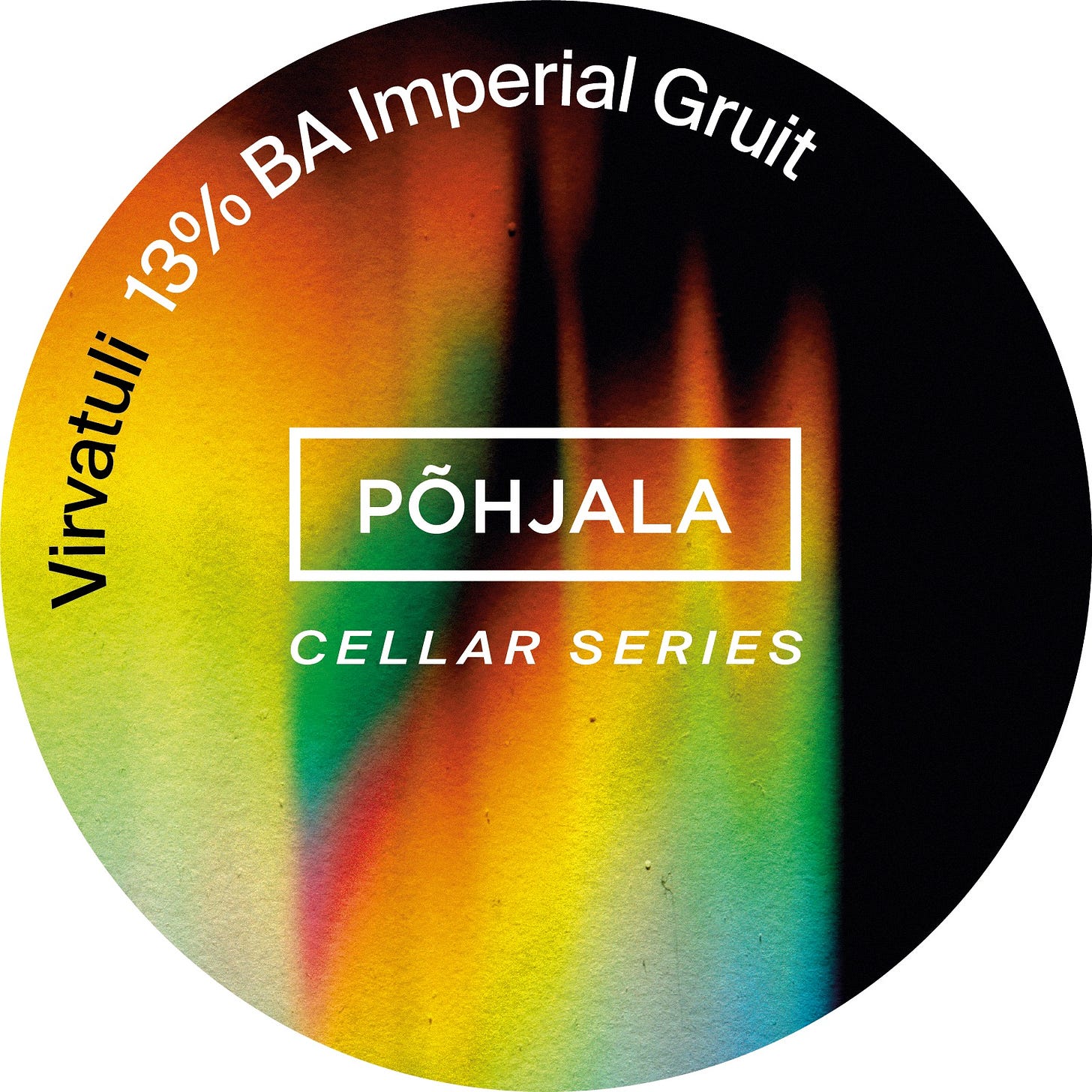
This mysterious, wildly-complex beer also serves as an ideal reminder of how Baltic breweries are not shy to modernise extremely old styles of beer.
After all, Gruit can be traced back to the 11th century, when a mix of crushed herbs were prepared in a kettle to add flavour, bitterness, and to preserve the beer. Herbs, then, largely served the same purpose as hops do today. “Virvatuli was kind of like my passion project that took forever to test out,” Martin continues. “Generally, gruit contains a lot of different bitter herbs, but we wanted to do something different. Estonia has a long-standing tradition of blossom and herbal teas that people use as remedies for everything from a cold to a hangover!
“Virvatuli was a new modern take on the historic gruit, because we used 10 different varieties of blossom and almost no herbs, which give it a loads of floral, almost almond-like character.
“I’m quite a big fan of Barley Wines”
“There’s also another element to the Virvatuli story, actually. During the COVID-19 lockdown, I developed yet another hobby involving alcohol, which was cocktail making,” he laughs. “I developed quite a taste for the Rob Roy, which is basically a Manhattan made from sweet vermouth and Scotch whisky.
“That’s where the inspiration for the selection of barrels we aged Virvatuli in comes from, The Scotch lends itself to that rich BA booziness we all love, whilst the sweet vermouth barrels added that lingering, clean bitterness, which gives the beer an extra layer of character.”
After listening to the humble enjoyment he takes from the creation of Virvatuli, it comes as a surprise that it is not his favourite Põhjala beer. Neither are any of The Big Beasts from the brewery’s canon of Baltic Porters and Imperial Stouts.
Instead, Martin’s tag of favourite is attributed to two of Põhjala’s Barley Wines - Triple Barrel, and Odravein. As a flag-carrying member of the #BarleyWineIsLife club, this strong ale with its roots in Victorian Britain proves an interesting choice. After all,Barley Wine had fallen out of fashion amongst drinkers thanks to an unfairly-earned reputation as the drink of choice for people who spit at you in the park.
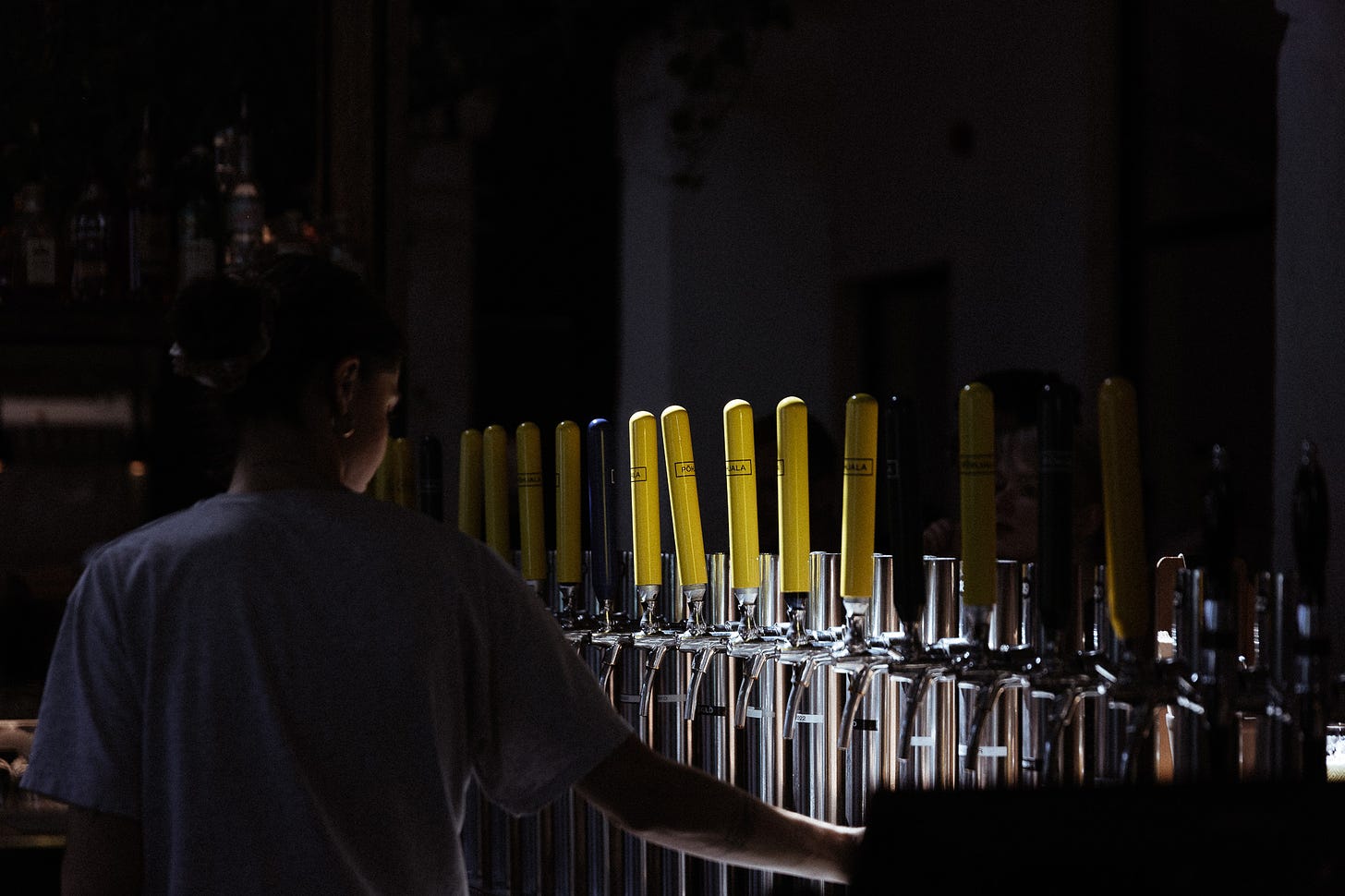
“Oh, I see that some hard-hitting questions are being wheeled out here, right?!” he asks rhetorically with a laugh. “I’m quite a big fan of Barley Wines, so it’s kind of a tie between two of these: there is Triple Barrel, a lovely mixture of three different vintage barley wines, which have Barrel-Aged for three years.
“The other one I have to mention has been my favourite Põhjala beer for the longest time is Odravein, which in Estonian means Barley Wine, and it’s the BA port and cognac version, which was one of my first loves from the world of beer. “It was an incredibly small batch, anniversary barley wine aged in port barrels and cognac barrels, which were then blended together. It has lovely dried-fruit characters. It is incredibly complex because you have this dessert wine character and the cognac finish which invites you to take another sip of it.”
“Vahtra is my surname, which in English it translates as “Maple”. There’s just a big sense of irony about the whole thing”
Reading the tasting notes for Odravein on the Põhjala website - “malts with dates, raisins, wine-soaked figs, dried plums and ginger biscuits [...] cognac and ludicrously complex grape flavours” - and perhaps most tempting of all, “like a visit to grandma’s kitchen, with some added bonus of some alcohol to warm you on a spring night.”
It’s enough to make any beer savant worth their salt well up because this 14% beast of a Barley Wine is no longer being brewed.
At least not at present.
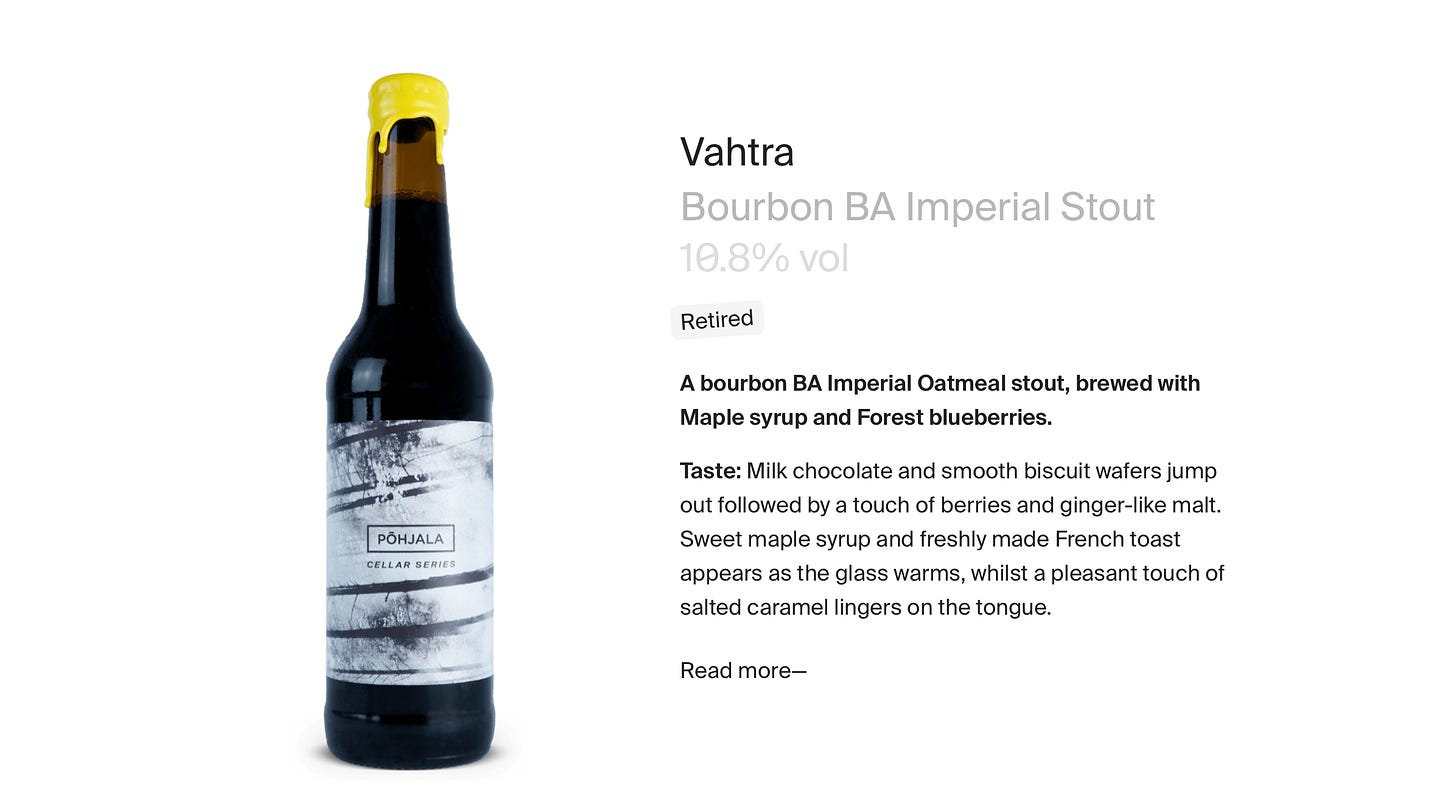
Whilst Martin won’t be drawn into whether some of the current out-of-production beers will be revived under his brewership, it does prove a smooth segue into Vahtra, an also now-retired 10.8% Bourbon BA Imperial Oatmeal Stout brewed with maple syrup and forest-foraged blueberries.
Given how much enthusiasm he displays for this beer - and Baltic folk are not exactly renowned for their levels of animation - it’s clear that Martin holds plenty of affection for it, just as he does for the Virvatuli BA Gruit he spoke of earlier.
“You don’t have to worry about anything - the beer will be as good as it has always been!”
“With Vahtra, it’s quite anecdotal,” he explains smiling. “I joined Põhjala as a brewer in December 2018 from Tanker, another Estonian craft brewery. Vahtra was the first beer I worked on when we moved to the new brewery in what was once an Imperial Russian submarine factory.
“The reason the beer was named Vahtra, was because it was inspired by the traditional American breakfast of blueberry pancakes and maple syrup, and during the brewing process, we added pure, Grade A maple syrup and pure, actual blueberries from nearby - we used absolutely no extracts in this one.
“I think this whole thing is quite funny because Vahtra is my surname, which in English it translates as “Maple”. There’s just a big sense of irony about the whole thing, but I must admit, it was Chris Pilkington who came up with the recipe and not me.”
It’s a good note on which to end.
Chris was the former Head Brewer at Põhjala who left Brewdog in 2012 to join what was then a small, startup Estonian brewery. To say that Chris was largely responsible for making Põhjala the globally-respected phenomenon it is today would be a colossal understatement. Brewing royalty, if you will.
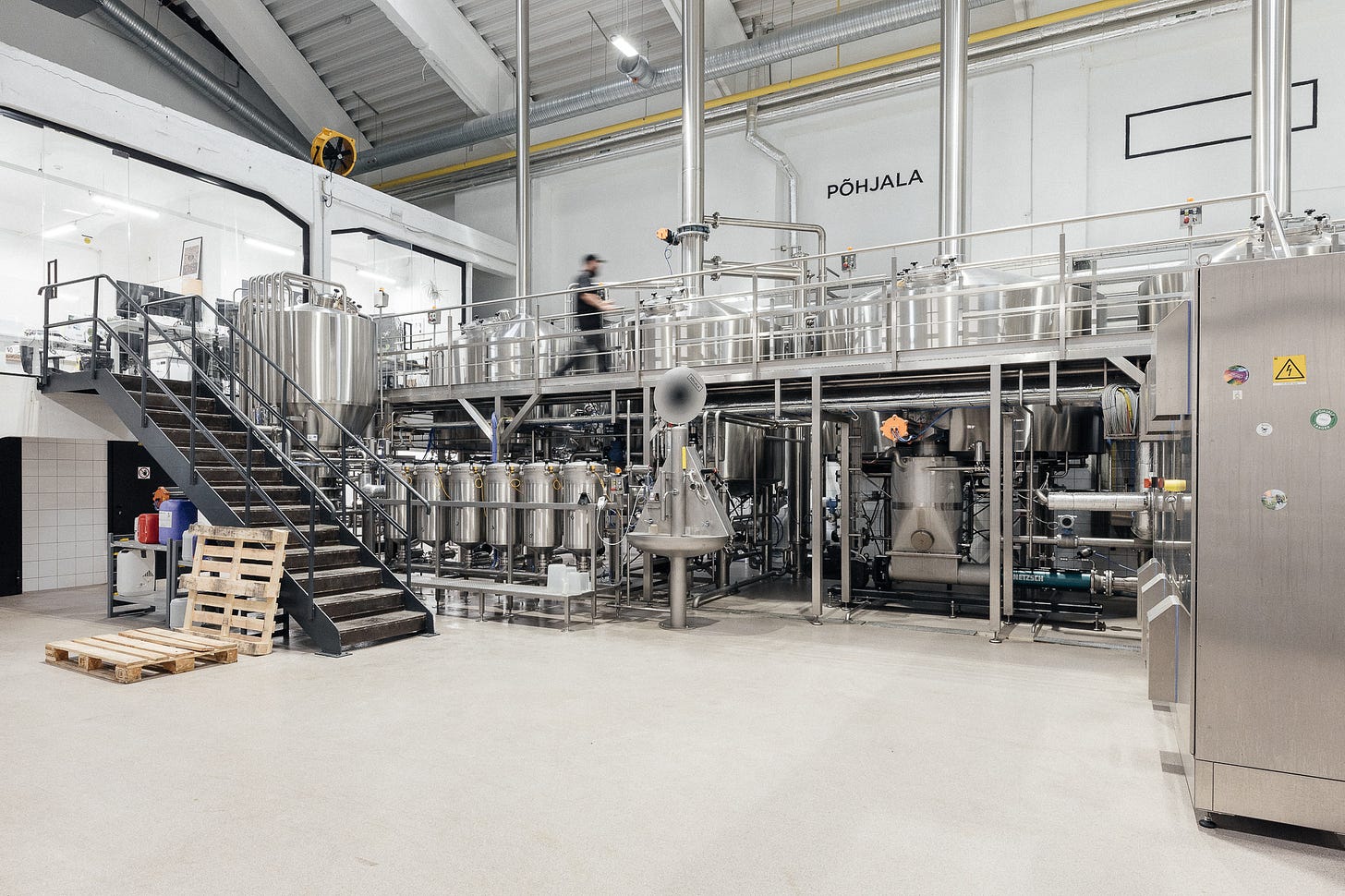
On the day this interview took place, March 7, 2023, it was announced that Chris would be leaving Põhjala after 11 years. The same day, Martin was named his successor. Somewhat big shoes to fill then, right?
“Chris and I have been working together side-by-side for four years, and we’ve been friends for way longer than that. It’s a massive legacy that he’s leaving behind,” Martin concludes fondly. “Nothing will change radically - after all, many of the beers from recent years have been created by Chris and I, or just me.
“If anything, I’ll now be in charge of leading the team as Chris did, and implementing small, boring, background changes such as increasing lauter tun efficiency and stuff like that.
“You don’t have to worry about anything - the beer will be as good as it has always been!”
Good.
BONUS ESTONIAN BEER FACT: “Põhjala” should is pronounced “Puhyalá” because of the “õ”, a letter unique to the Estonian language. “Póhyalá” will do, though.
—




